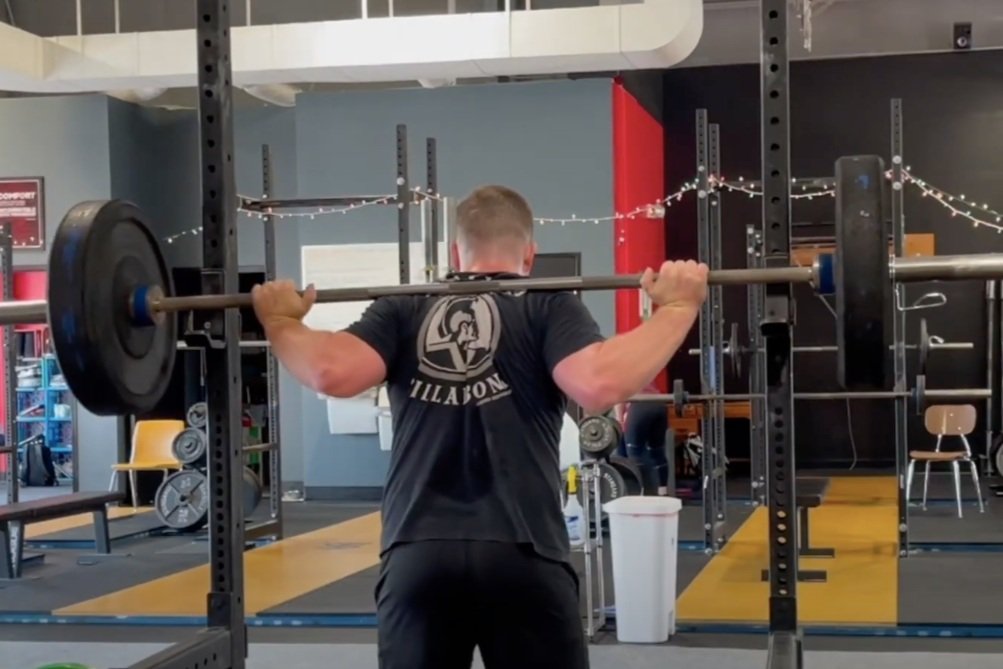"This Made Him Look STUPID!" | Squat Mistake
/Quit making this mistake. It looks silly, it’s pointless, and it can cause a problem, so let’s fix it fast.
Figure 1: don’t do this.
The Mistake
What’s the mistake? It is that of looking for the hooks (AKA “j-hooks”) when racking the squat. After all, unless you have an incredibly cruel training partner, the hooks didn’t go anywhere while you were squatting, so there’s no need for you to look sideways for them when racking the barbell at the end of your set (Figure 1).
Why is This a Problem?
Looking for the hooks is unnecessary, it’s a waste of time and energy, and it makes you look like a newbie. Additionally - and most importantly - it increases the chance that someday (probably not today, but someday), you’re going to end up as a great candidate for a YouTube fail video because - while you’re going to make the hook that you’re looking for - you’re eventually going to miss the hook that you’re not looking for.
You Don’t Really Care About the Hooks Anyway, Right?
It’s useful to remember that you don’t aim for the hooks anyway - you simply want to get the bar to hit the uprights and then stay in contact with the uprights as you slide the bar down a few inches until it’s resting on the hooks.
figure 2: this . . . is much better.
How to Fix the Problem
With this in mind, when you finish your set of squats, keep looking at the same focal point you used when squatting (on the floor roughly four to six feet in front of you) and walk straight ahead until the bar runs into the uprights (Figure 2). You’ll know because . . . you’ll stop moving.
Once you’ve hit the uprights, and assuming that you’ve set your hooks at a reasonable height (and if you’re not sure, be sure to watch the included video below), maintain bar contact with the uprights while you use your legs to dip down slightly until the bar is sitting in the hooks.
This last point is worth repeating - as long as you maintain contact with the uprights, you’ll end up with the bar correctly resting in the hooks every single time.
Put simply, be smart. Looking at the hooks when racking the bar is unnecessary, it’s a waste of time and effort, and it increases the chance that you’re going to do something silly like end up with half a barbell still on your back when you think it’s completely back on the hooks.
As always, we hope this helps you get stronger and live better.
(Some links may be affiliate links. As an Amazon Associate, Testify earns from qualifying purchases.)






